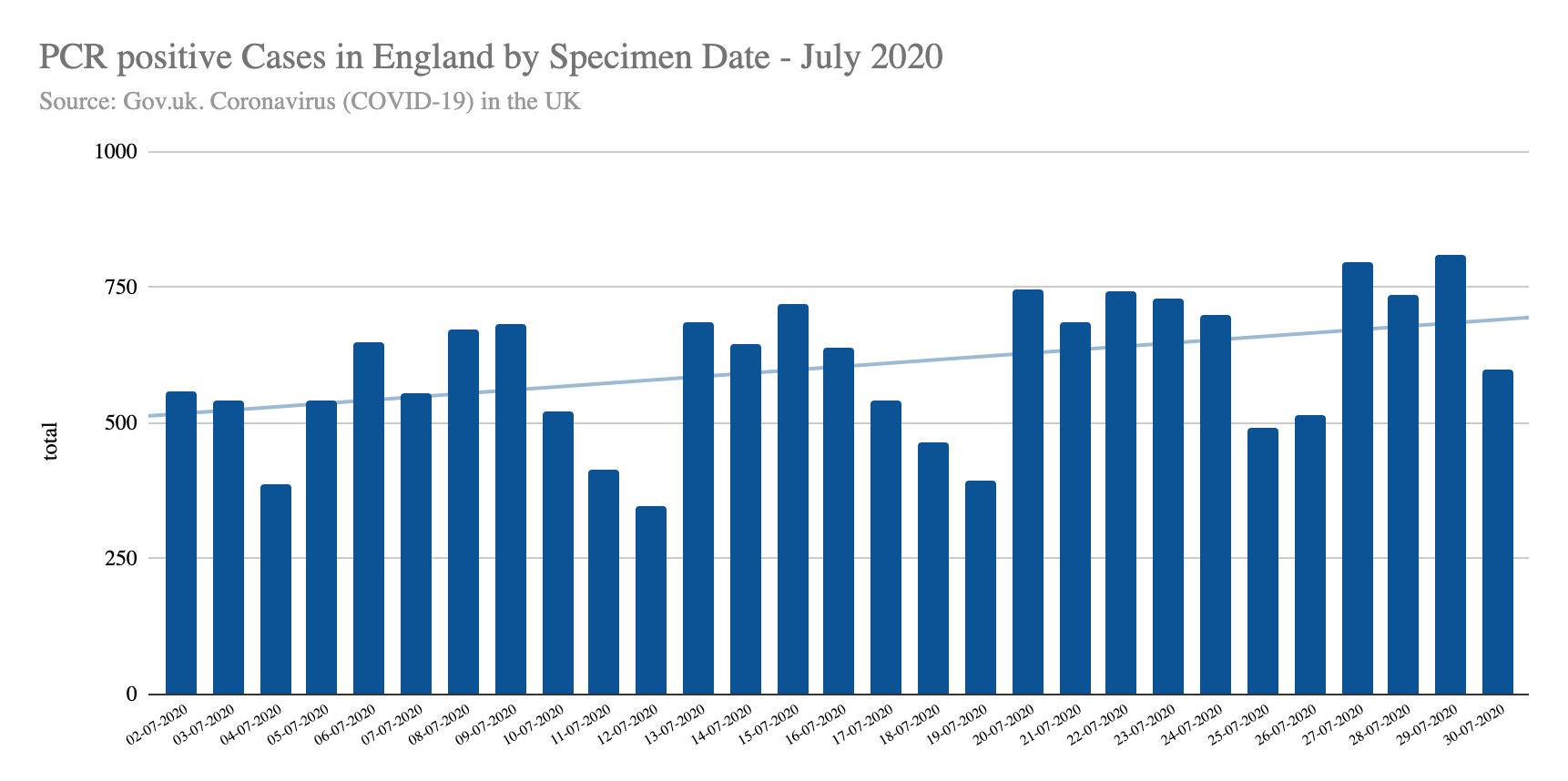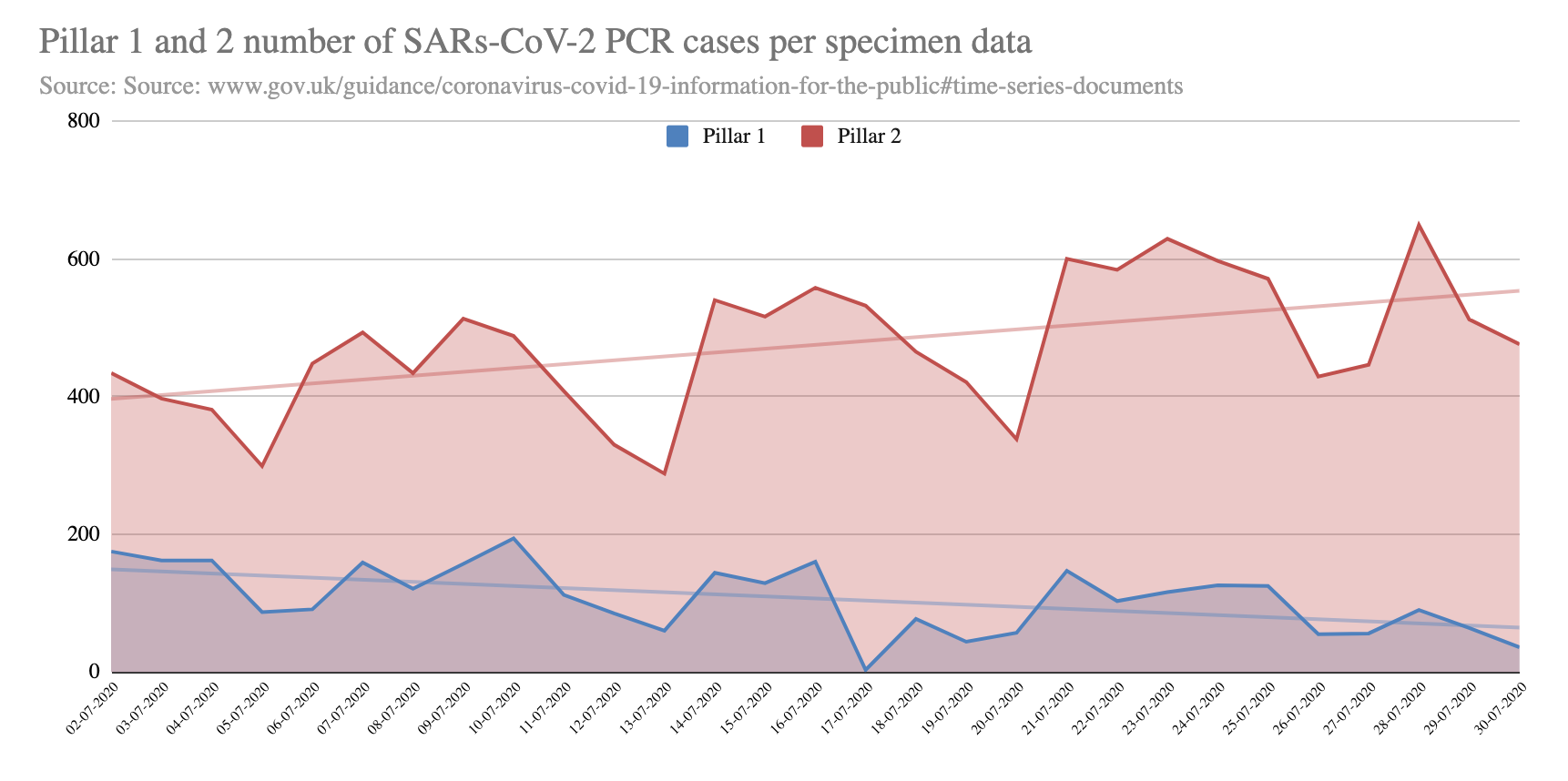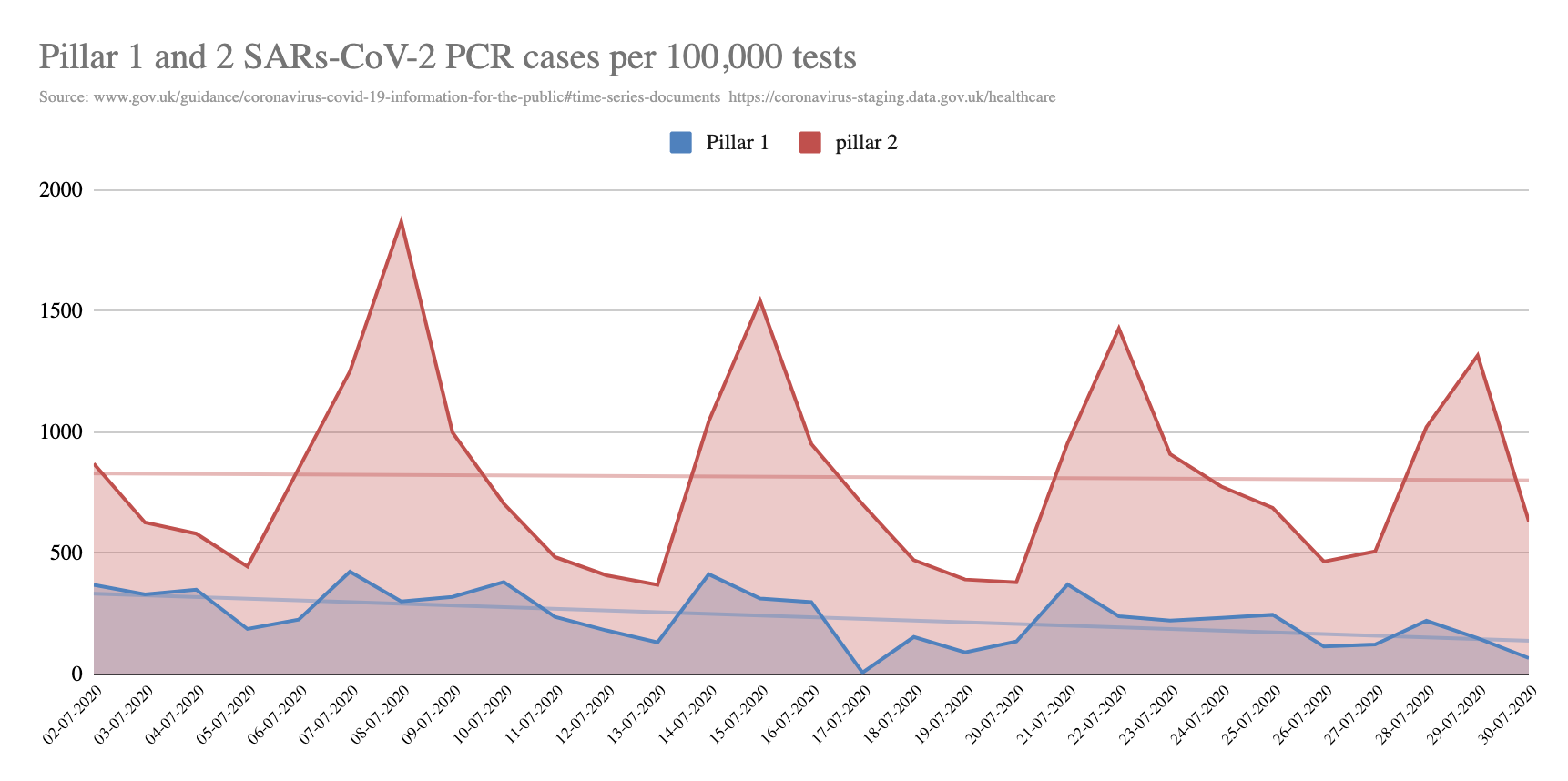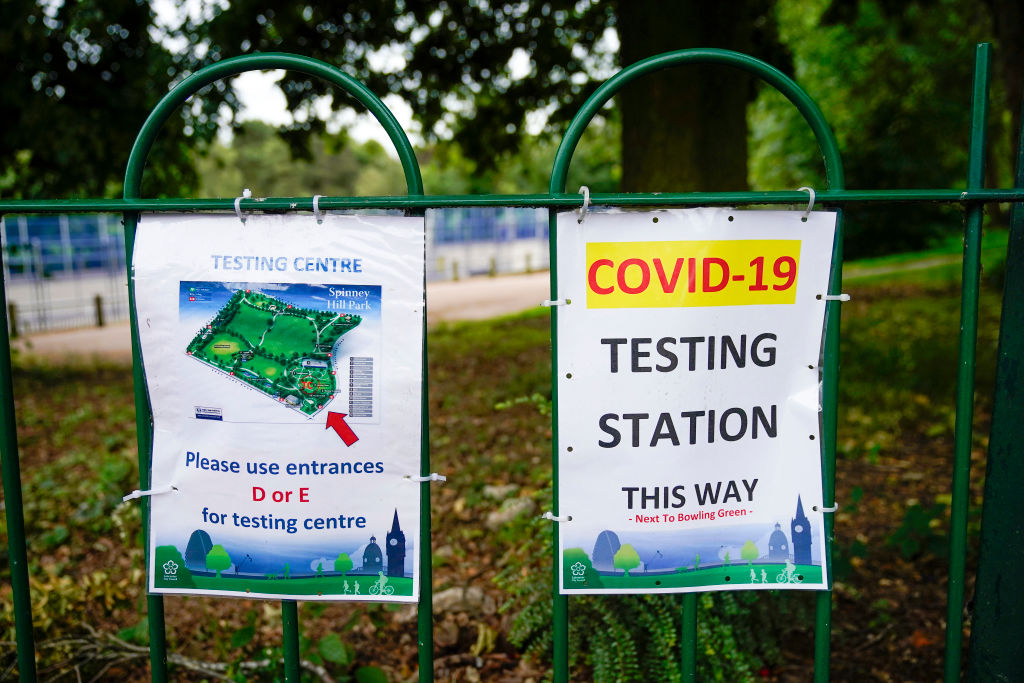The government has restricted the movements of millions of people in England because Covid is apparently on the rise. But what happens when you start digging into the data?
I have used two datasets to piece together the number of tests, cases and results for Pillar 1 tests (which are done in healthcare settings) and Pillar 2 tests (which are done in the community).
Looking at the data for July, by the date PCR tests are reported, you can see a trend for an increased number of cases detected (from about 500 to nearly 750 a day). If you then look at the date the actual tests were taken, the trend is still apparent:

Now all things being equal, the increase in cases is about 250 per day over a month – not an exponential rise and no sudden jump. But is this a real increase or could it be down to something else, such as an increase in testing?
On the 28 July in England, Pillar 1 tests reported 64 cases, and Pillar 2 reported 512 cases – 576 in total. Yet the Gov.uk website reports that there were only 547 cases on the same day. Which figure is right? This inaccuracy makes it difficult to make judgements as to what is happening on the ground.
Meanwhile, it seems like the number of cases in Pillar 2 is trending up and Pillar 1 is trending down. This would suggest that the increase in hospitals is staying the same; while in the community Pillar 2 testing is picking up milder asymptomatic disease.

However, what happens if you adjust for any change in testing over time? On 1 July the number of tests administered over a seven-day moving average was 41,109 for Pillar 1 and 43,161 for Pillar 2. By 31 July, the Pillar 1 seven-day average for testing had increased to 49,543 (a 20 per cent increase), while Pillar 2 testing had risen more – by 82 per cent to 78,522 tests.
The next graph shows what happens when you adjust for the number of tests done and then standardise the number of cases to per 100,000 tests. Pillar 1 is now still trending down, but Pillar 2 is flatlining. The increase in the number of cases detected is likely due to the increase in testing in Pillar 2.

It is essential to adjust for the number of tests being done. Leicester and Oldham have seen significant increases in testing in a short time. Leicester, for example, in the first two weeks of July did more tests than anywhere else in England – 15,122 tests were completed in the two weeks up to 13 July.
The potential for false-positives (those people without the disease who test positive) to drive the increase in community (Pillar 2) cases is substantial, particularly because the accuracy of the test and the detection of viable viruses within a community setting is unclear.
Standardising cases per tests done and aligning the counts in different datasets to provide the same numbers will give us a better understanding of whether cases are actually going up or down.
Inaccuracies in the data and poor interpretation will often lead to decision-making errors about imposing restrictions, particularly if these decisions are done in haste and the interpretation does not account for fluctuations in the rates of testing.
This article originally appeared on the CEBM website.






Comments